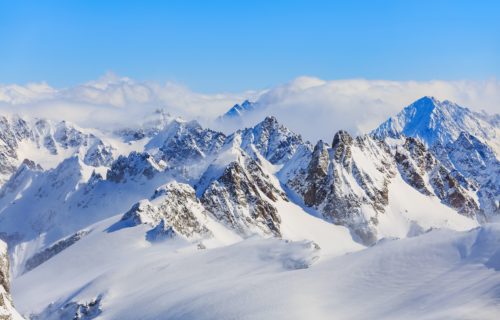SOUTH TYROL, Italy — Mountains across the world have on average two weeks less annual snow cover than they did in 1982, according to scientists at Eurac Research in Italy. Some peaks in Canada’s western provinces are seeing as many as 20 or 30 fewer days of snow while total coverage across the globe has seen a decline of four percent.
The work helps to confirm the findings of an initial study in 2020 that concludes snow cover has declined in 78 percent of mountain areas over the last 20 years.
“Unfortunately, there are no denials of these trends, only confirmations. With a few exceptions, data on both the extent and duration of snow cover are clearly decreasing,” says study author Claudia Notarnicola, a physicist and deputy director of Eurac Research’s Institute for Earth Observation, in a statement.
The study took a hybrid approach by combining MODIS satellite data time series from 2000 until 2020 with a resolution of 500 meters, and mathematical models.
“I chose a highly attested NASA global model as the basis and then refined it,” explains Notarnicola. “In fact, for the period when the data from the model and the more precise satellite images overlapped, I was able to better calibrate the model thanks to so-called artificial neural networks, a computational system that falls under the aegis of artificial intelligence.”
There are a few counter-trends to the general decrease in snowfall, but not enough to have any significant impact. For example, in the early 1980s, the eruption of Mexico’s El Chichon volcano caused a slight cooling that counteracted the decrease in snowfall, but this phenomenon has not lasted long.
“In general, over these 38 years of analysis there are also some cases of increases in both coverage and snow days, specifically in parts of Central Asia and some valleys in the United States,” adds Notarnicola. “There are no consensus explanations for these phenomena, but they could be other effects of climate change, for example variations in currents and winds or specific microclimatic conditions. In any case, these are a few exceptions in a very negative global context.”
Notarnicola’s paper is published in the journal Scientific Reports.
South West News Service writer Danny Halpin contributed to this report.

